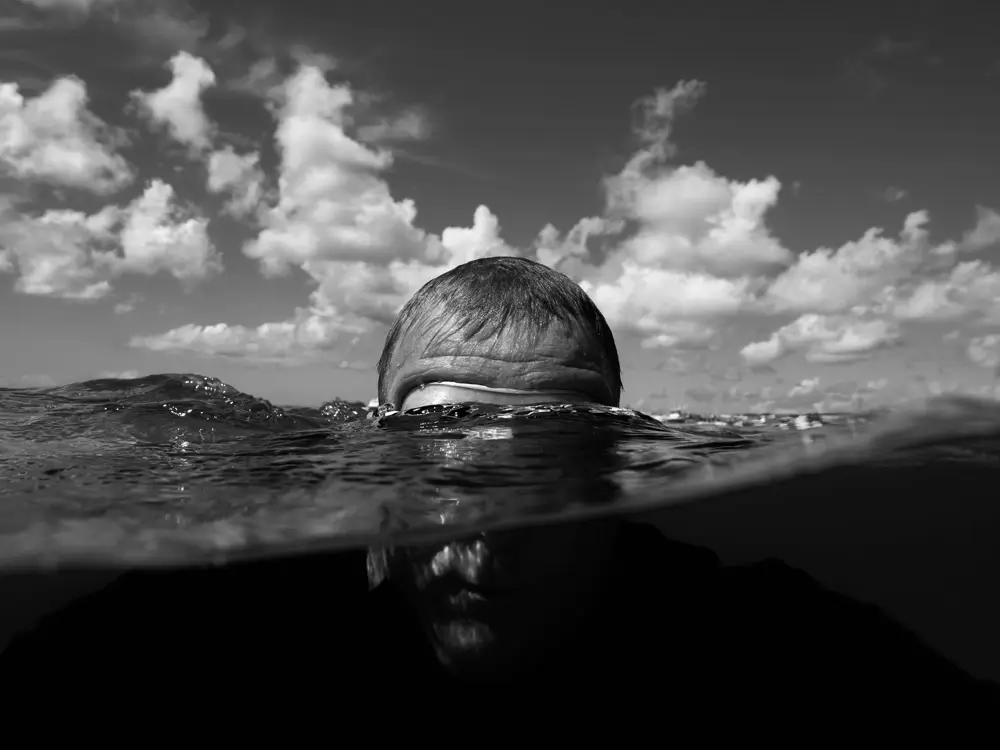Born on Merseyside in 1970, Carruthers was a footballer first and creative second. Only after a knee injury ended his playing career did he begin to see the world through a different lens. Wandering around the streets of Liverpool with his trusted Fuji, Carruthers’ early work examined the funny, the absurd and the beautiful. A move to Devon in the 2000’s saw him begin the approaches for which he is most famous for today.
Serene landscapes and still water marked his style during this period, with an emphasis on strong contrasts and stylised seascapes.
He became the British Life Photographer of the Year in 2017, with his photograph Lifeguard earning national news coverage. His photographs have toured Australia and Asia and he has been recognised by a number of prestigious magazines and competitions: most notably the Head On Photography Awards and the ND Awards.
His seminal series Grockles explores the relationship between tourist (or Grockle, as they’re known in Devon) and local, and has garnered widespread accolades. Often taking a humorous tone to serious subjects, Carruthers’ work has tackled wide ranging topics including tourism, the housing crisis, light pollution, and more. His keen eye for light, shadow and colour, demonstrated through award winning images like ‘Vitamin C’ and ‘Better Call Saul’, is subtle in its use of its environment to illustrate meaning behind the centered characters.
Through this work, Carruthers was recently crowned as Oneeyeland’s number 1 UK street photographer. His work continues to highlight one of the unseen crises at the heart of the UK, and in typical British style, to explore the humour, absurdity and beauty that are present in seaside communities across Devon and Cornwall.
Statement:
Imagine you’re on a Devon high street under the hot sun, or on the edge of a breakwater as the water strikes the stone. This is beautiful country, patchwork country. Fields knit together like coloured felt. Expensive boots strike against cobbles, or are stripped away and discarded in favour of sandy feet. The water is still; the water is uproarious. The locals wipe away a sheen of sweat.
There is everything. Beauty and silence, underpinned by the absurdity of hordes of tourists descending upon a part of the world that for many years was home to nothing but fishermen, or, when times were bad, shipwreckers. Second homes sit dormant for most of the year. Industries strain under the pressure of the boom and bust of the holiday season.
For an artist, this is a treasure trove. Nature and people both exist simultaneously in ideal form and under great stress. I’ve explored a number of projects over the years, from the horses of Carlisle Bay in Barbados, to Lost in Venice, but my greatest body of works lies in both my landscape series Devotion, and my street photography series Grockles. It is in these that I paint an honest picture of a region and its people.
